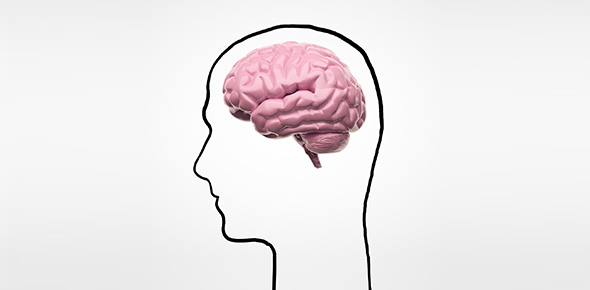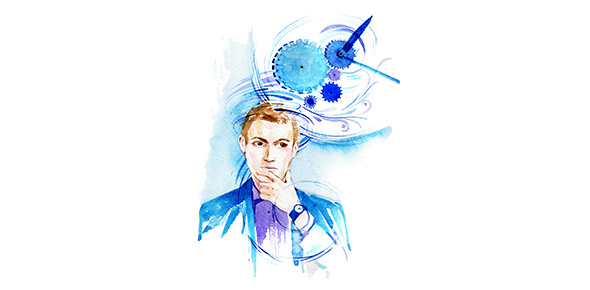Related Flashcards
Related Topics
Cards In This Set
| Front | Back |
|
Nervous System defined is?
|
Nervous system is the master controlling and communicating system of the body
|
|
Functions of the Nervous System:
1. Sensory Output-Explain |
1. Sensory Output-- to sense changes in the internal and external environment and conducts signals from sensory receptors (ex. light detecting cells of the eye)
|
|
Functions of the Nervous System:
2. Integration- 3. Motor Output- |
2. Integration- the analysis/interpretation of the sensory signals and the formulation of appropriate responses
3. Motor Output- conduction of signals from the integration centers to effector cells, such as muscle or gland cells, which perform the body's responses is to respond to stimuli by initiating action |
|
Divisions/Organization of the Nervous System
Two main anatomical divisions: A. Central Nervous System (CNS) consists of? explain a bit |
1. Central Nervous System (CNS)- consists of the brain and the spinal cord (dorsal body cavity). Integration and command center (interprets sensory input and dictates motor responses)
|
|
Divisions/Organization of the Nervous System
Two main anatomical divisions: B. Peripheral Nervous System (PNS) Consists of? |
B. Peripheral Nervous System (PNS)- consists of nerves that carry signals into and out of the CNS.
Spinal nerves carry impulses to and from the spinal cord. Cranial nerves carry impulses to and from the brain |
|
Peripheral Nervous System (PNS)
I.) Sensory (Afferent) Division. Explain a bit, what are the two adifferent fibers and what do they do. II.) Motor (Efferent) Division. Explain. |
Sensory (Afferent) Division- nerve fibers (axons) convey impulses TO the CNS from sensory receptors located throughout the body.
i.) Somatic adifferent fibers- carry impulses from the skin, skeletal muscles and joints to the brain. ii.) Visceral adifferent fibers- transmit impulses from visceral organs to the brain. II.) Motor (Efferent) Division- transmits impulses from the CNS to the effector. |
|
Motor (Efferent) Division- transmits impulses from the CNS to effector organs (muscles and glands)
i) Somatic Nervous System ii) Autonomic nervous System (ANS) (Two divisions) |
i) Somatic Nervous System- Voluntary nervous system--conscious control of skeletal muscles (contraction)
ii) Autonomic nervous System (ANS)- Involuntary nervous system--regulates smooth muscle, cardiac muscle (contraction) and glands (secretion) Two divisions: Sympathetic- (stimulates-getting excited) Parasympathetic (inhibits-calming down) |
|
History of Nervous Tissue: the two principal cell types of the nervous system are:
|
Neuroglia (glial/supporting cells)- provide a supportive scaffold for neurons.
Neurons- excitable cells that transmit electrical signals |
|
Neuroglia
i) Astrocytes (CNS) function, characteristic, etc |
Neuroglia
Astrocytes (CNS)- most abundant. Star-shaped cells, radiating processes support, brase and anchor neurons to blood capillaries (nutrient supply). Help form blood-brain barrier. Maintain appropriate ion and neurotransmitter concentrations. |
|
Neuroglia
ii) Microglial Cells (CNS) |
Ii) Microglial Cells (CNS)- defensive cells in the CNS, transform into phagocytic cells-clear away microbes and dead cells
|
|
Neuroglia
iii) Ependymal Cells (CNS) |
Iii) Ependymal Cells (CNS)- form epithelial membrane lining ventricles of brain and central cavities of brain. Produce cerebrospinal fluid (CSF), Cilia aid in circulation of CSF
|
|
Neuroglia
iv) Oligodendrocytes (CNS) v.) Schwann Cells (PNS) |
Iv) Oligodendrocytes (CNS)- cell processes wrap around CNS axons and form insulating myelin sheath.
v.) Schwann Cells (PNS)- Produce myelin sheaths and wrap around axons in PNS |
|
Neuroglia
vi.) Satellite Cells (PNS) |
Vi.) Satellite Cells (PNS)- flat cells that surround and support neuronal cell bodies (ganglia) in PNS. Has many of the same functions as astrocytes for the CNS.
|
|
Neurons (Nerve Cells)=?
|
Neurons are structural units of the nervous system. They conduct messages in the form of nerve impulses from one part of the body to the other. Long-lived, amitotic, and have a high metabolic rate.
|
|
Neuron cell body explained..?
|
Neroun cell body:
Also called perikaryon of soma. Neuron organelles are located here contains the nucleus and nucleolus Has well-developed Nissl bodies (through endo retic) In CNS referred to as nuclei In PNS referred to as ganglia |





